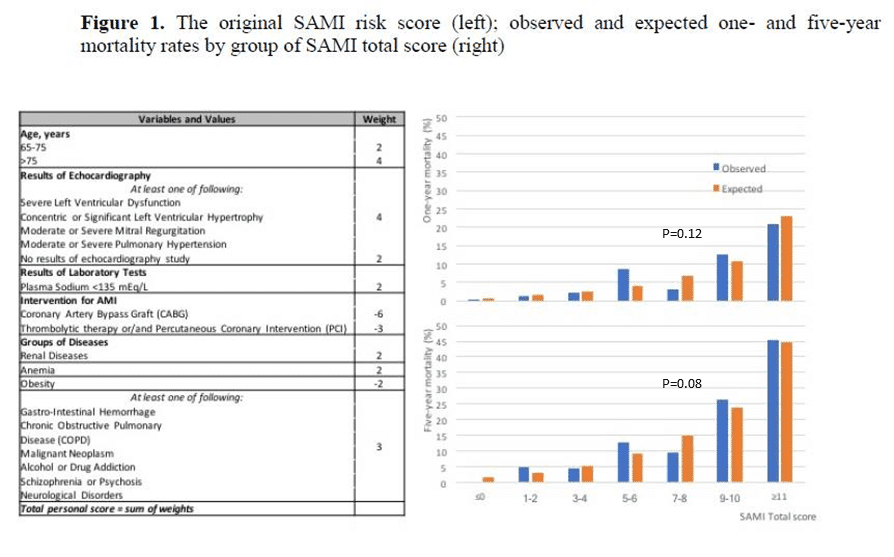
Prediction of Mortality in Hospital Survivors of STEMI: External Validation of a Novel Acute Myocardial Infarction Prognostic Score
2Nursing, Faculty of Health Sciences, Ben-Gurion University of the Negev
Introduction & objective: Recently we developed and internally-validated the Soroka Acute Myocardial Infarction (SAMI) Score for prediction of long-term mortality (c-statistic 0.83-0.94) among hospital-survivors of AMI. We aimed to perform an external-validation of the SAMI score for long-term risk-stratification of STEMI patients undergoing PCI.
Methods & Settings: A prospective registry of 1,273 STEMI patients treated using primary PCI and discharged alive from a tertiary hospital between 2004-2014 (age 60.8±12.5 years, 83% males) was utilized. Chi-square test and logistic regression were used for calibration, and c-statistic (ROC procedure) for discrimination assessment of the SAMI score.
Results: All-cause mortality following one- and 5-years post-discharge was 3.8% and 8.1%, respectively. SAMI score values ranged between (-5) and (+15) points (median 2-points). In a univariate analysis the SAMI score variables were significantly associated with 1- and 5-years mortality. Higher SAMI score was associated with increased risk for dying: one-point increase was associated with OR of 1.33 (95%CI: 1.24-1.42, p<0.001) and 1.37 (95%CI: 1.29-1.44, p<0.001) for one- and 5-years mortality respectively. No statistically significant difference was found between the observed and expected mortality rates by groups of SAMI score (figure). The c-statistics were 0.818 and 0.83 for one- and 5-year mortality, respectively.
Conclusions: The SAMI score is a robust and prognostic tool for prediction of long-term all-cause mortality in hospital survivors of STEMI.


Powered by Eventact EMS